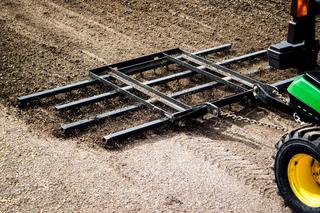Yes, Your UTV Can Plow Snow
Here's how to set things up


That UTV that offered so much fun and utility all summer shouldn’t sit idle just because winter arrives. Put it work plowing snow—after all, they’re made for rugged outdoor use.
Snow plow manufacturer Western Plows offers the following advice to help you get started.
Equipment selection checklist
Let’s begin with some decisions you’ll have to make.
Consider a windshield or cab—A windshield provides a necessary layer of protection from the elements. Or, consider upgrading to a UTV with doors and a heated cab, or installing an aftermarket cab.
Choose the right plow type—Today there are manual-angle plows, winch-lift plows, and hydraulic plows. If you plan on moving a lot of snow, a hydraulic lift and angle plow allows you to position the plow up, down, left, or right without leaving the cab.
Make note of the battery—Cold temperatures and higher electric demand can test the life of a smaller UTV battery, so opt for a high-quality sealed battery. Electronic fuel injection requires sufficient voltage to operate, so a weak or defective battery can shut down your plans fast.
Light it up—Snow and ice removal often happens at night or early in the morning, so having the correct lighting on your UTV is important. Work lights in the front and the rear of the vehicle help illuminate the work area and make you more noticeable to other vehicles.
Plow accessories
Once you decide on the best plow for your utility vehicle, set it up correctly with the right accessories. Most common are:
Plow shoe kits to easily adjust the height of the blade from the ground. This is helpful if you’re removing snow from surfaces like gravel or pavers—you can set your shoes to allow the plow blade to float slightly above the surface.
Cutting edge materials matter as well. A steel cutting edge is usually standard on most plow blades. This is durable and provides a clean scrape, but can damage gravel, pavers, or packed earth. Poly (polyurethane) cutting edges are more forgiving than steel, but might require more passes.
A rubber deflector installed at the top of the plow blade limits the amount of snow that blows off the top of the blade onto the windshield. If you are using your UTV to plow in higher traffic areas or along a roadside, a rubber deflector could increase the safety of those around you.
Maintenance and safety
It’s important to keep up with routine maintenance on your UTV for peak performance from season to season.
Oil & fluids—Check that the coolant is rated for temperatures down to -40° F. Know what type of oil your UTV requires, as many run on run synthetic oil which performs well in winter conditions.
Connections—Before plowing or spreading salt or sand, check that all your plow and spreader connections are in place. This is quick and easy, and it will save you from major issues if the connections dislodge during operation.
Air intake—After you move snow with your UTV, check the air intake. Fine “snow dust” can freeze here, preventing your engine from receiving the air it needs to run smoothly. In fact, clean off everything as much as possible to reduce freezing and the rusting of any exposed metal.
Storage—When parking your UTV, lower the plow so it rests on the ground to alleviate the weight of the plow on your vehicle’s suspension or winch when not in use.
Got questions?
If you have questions on what equipment would be right for your vehicle, it’s better to talk to someone before making a purchase. Reach out to the team at WESTERN if you feel stuck—they have the tools and experience to help determine the right plow for your UTV.
Western Plows
Tags:Tool Time

Acreage Life is part of the Catalyst Communications Network publication family.
















